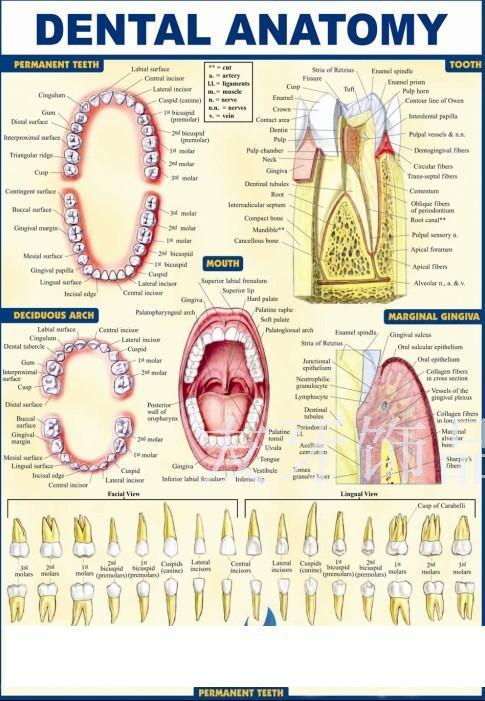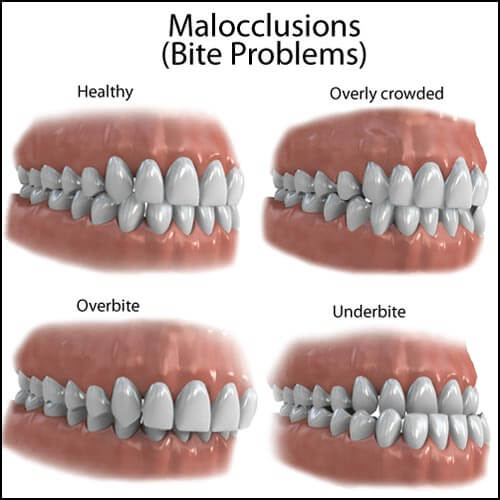 In order for dentists to be able to get their degrees so that they can practice dentistry, they must first undergo extensive educational training at first an undergraduate college and then a graduate college. In addition to the education they receive about science and research skills in general, they must also demonstrate an extensive knowledge of dental anatomy.
In order for dentists to be able to get their degrees so that they can practice dentistry, they must first undergo extensive educational training at first an undergraduate college and then a graduate college. In addition to the education they receive about science and research skills in general, they must also demonstrate an extensive knowledge of dental anatomy.
What Is Dental Anatomy?
Dental anatomy refers to the field of human anatomy that is dedicated solely to the mouth and teeth. It encompasses everything from knowing all the different types and parts of the mouth and teeth to understanding how they develop and what their proper alignment is.
Parts of the Mouth and Teeth
The parts of the mouth and teeth are many, and dentists know the technical terms for each part.
The parts of the mouth are as follows:
• Tongue This is muscle that assists individuals in everything from speaking and chewing to swallowing. It’s a powerful muscle that contains the sensory glands that allow humans to tastes.
• Alveolar bone This is the bone that surrounds the teeth and stabilizes them.
• Gums This is the tissue that holds the teeth in place.
• Salivary glands These are the glands that help humans produce saliva, and they are necessary for not only speaking, chewing and swallowing, but for also assisting in helping rid the mouth of bacteria.
• Temporomandibular joint This is the joint within the mouth that allows individuals to open and close their mouths and move their jaws backwards and forwards.
The parts of the teeth include the following:
• Enamel This is the hard, white outer shell of the tooth, and it’s primarily made up of calcium.
• Dentin This is the part of the tooth that lies directly beneath the enamel.
• Pulp. This part of the tooth serves as the center of it, and it’s where all the nerve endings are found.
• Cementum The tissues that connect the teeth to the mouth and jaws is known as this.
• Root This is the part of the tooth that connects it to the gums and bone underneath them.
The types of teeth found inside the mouth include the following:
• Incisors There are eight of these teeth found within the mouth. Four of them are located on the upper jaw, and four of them are located on the bottom jaw. They are the middle four teeth for both the upper and lower jaws.
• Cuspids Also referred to as the canines, these are the “eye” teeth that are located on either side of the incisors. They are pointed, and there are a total of four in the entire mouth, two on the top and two on the bottom.
• Molars These are the flat teeth located in the back of the mouth, and there are eight of them in total, four on each side of the mouth.
• Premolars There are eight of these, and they are located between the molars and the cuspids.
• Wisdom teeth There are four wisdom teeth, two on either side of the mouth, although not everyone develops these.
Common Conditions That Affect the Mouth and Teeth
 Dentists deal with treating the conditions that affect the mouth and teeth, and once they understand the anatomy of the teeth, they can deal with these conditions. Among the most common conditions that dentists treat include cavities, which are signs of decay in the tooth, and overbites and underbites, both of which are orthodontic conditions. Plaque and tartar are perhaps the most common conditions that dentists deal with when they conduct routine dental cleaning. Although patients can help control plaque and tartar by regularly brushing and flossing their teeth, it’s still recommended that people see their dentists at least once or twice a year for a professional cleaning session. More serious conditions commonly seen by dentists include gingivitis, which is more commonly known as gum disease, and periodontists, which refers to inflammation in the deeper parts of the tooth and jawbone.
Dentists deal with treating the conditions that affect the mouth and teeth, and once they understand the anatomy of the teeth, they can deal with these conditions. Among the most common conditions that dentists treat include cavities, which are signs of decay in the tooth, and overbites and underbites, both of which are orthodontic conditions. Plaque and tartar are perhaps the most common conditions that dentists deal with when they conduct routine dental cleaning. Although patients can help control plaque and tartar by regularly brushing and flossing their teeth, it’s still recommended that people see their dentists at least once or twice a year for a professional cleaning session. More serious conditions commonly seen by dentists include gingivitis, which is more commonly known as gum disease, and periodontists, which refers to inflammation in the deeper parts of the tooth and jawbone.
Colgate. “Mouth and Teeth Anatomy.” Retrieved on May 16, 2016, from http://www.colgate.com/en/us/oc/oral-health/basics/mouth-and-teeth-anatomy.
The Journal of the American Dental Association. “Dental Anatomy.” Retrieved on May 16, 2016, from http://jada.ada.org/article/S0002-8177(82)44009-1/abstract.
Colgate
300 Park Ave.
New York, NY 10022
212-310-2000
http://www.colgate.com
The Journal of the American Dental Association
211 East Chicago Ave.
Chicago, IL 60611-2678
312-440-2500
http://jada.ada.org
Images:
http://img.alibaba.com/img/pb/577/462/618/618462577_074.jpg
http://lakefrontfamilydentistry.com/images/over-bite-treatment.jpg